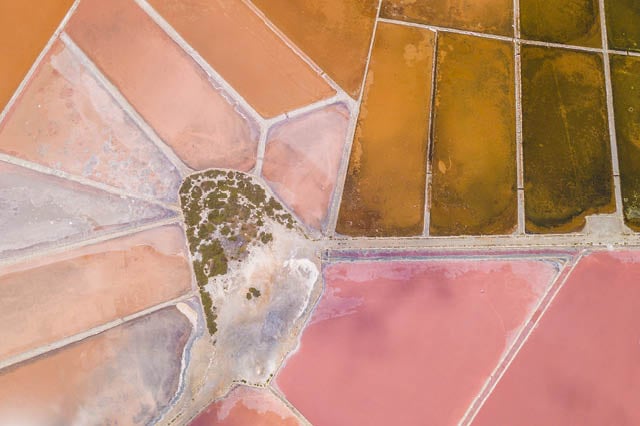NSW Contributions Review Series – Part 4: guidance and clarity on SICs and contributions reporting 11 min read
The NSW Government is seeking feedback on a new set of guidelines for special infrastructure contributions (SIC Guidelines) and some proposed amendments to the Environmental Planning and Assessment Regulation 2000 (EPA Regulations) which will require greater reporting on the receipt and expenditure of contributions under local contributions plans and planning agreements. The proposed measures are the final two elements of a suite of immediate measures intended to improve the NSW infrastructure contributions system. These proposals have the potential to provide greater clarity and transparency in relation to the imposition and use of special infrastructure contributions (SICs) and the expenditure of other types of development contributions.
Key takeaways
- If adopted, the SIC Guidelines will be the first of their kind, providing useful guidance and clarity in relation to the circumstances in which SICs will be imposed and how they will be expended.
- There are some missed opportunities in the SIC Guidelines, including in relation to the timing for payment of SICs and encouraging private sector input into the identification of infrastructure to be funded by SICs.
- The proposed amendments to the EPA Regulations will provide greater transparency and accountability in relation to the receipt and expenditure of contributions, but do not address the existing inability to compel councils to use contributions for the purpose collected. Further, they will not improve the frequency of reporting or timeliness of information.
- Industry stakeholders should closely monitor the broader review of the NSW contributions system currently being undertaken by the Productivity Commissioner who, according to public announcements, is due to report by the end of the year and may make recommendations for a significant overhaul of the contributions system.
Background
SICs assist in funding key state and regional infrastructure which is not able to be funded under council contributions plans, such as state and regional roads, health and education facilities and regional open space. SICs are administered by the Department of Planning, Industry and Environment (DPIE) and are imposed in declared 'special contribution areas', generally in addition to local infrastructure contributions. As such, SICs can represent a significant additional impost on proponents of development, the cost of which is ultimately passed through to purchasers.
Currently, there is limited guidance in relation to when a SIC will be imposed and how revenue obtained under a SIC will be applied. To address this gap, the NSW Government has released the draft SIC Guidelines.
Separately, in order to address concerns regarding the extent of transparency and accountability in relation to the collection and use of contributions collected under contributions plans and planning agreements, the NSW Government is proposing a number of amendments to the EPA Regulations.
Draft SIC Guidelines
The SIC Guidelines aim to provide greater clarity in relation to the purpose and objectives of the SIC framework, the development and implementation of new SICs, and the process for allocating SIC revenue. The SIC Guidelines set out five key principles that underpin the SIC framework, and seven key components that are to be addressed in all SIC determinations.
| Key Principles | Key Components |
|---|---|
|
SICs will
|
Each SIC will include the following information
|
While some of these principles and components merely reflect the mandatory requirements for SICs under the Environmental Planning and Assessment Act 1979 (NSW), there are some notable new inclusions and themes running through the SIC Guidelines.
- Strategic planning focus - The SIC Guidelines introduce a new requirement for a SIC determination to provide detail of the supporting strategic land use planning context. There is a strong focus on the use of SICs to support strategic objectives and an indication that SIC revenue will be invested in projects that are consistent with infrastructure or service requirements identified in relevant state or local planning strategies.
The alignment of SIC expenditure with the infrastructure needs identified in strategic plans is sensible. However, in our view there should also be flexibility to fund infrastructure that may not be contemplated in a strategic plan, where this can be justified by the rate of growth and infrastructure needs of a particular area, and funding should not be delayed while the relevant strategic plans play catch-up. - Transparency and predictability - There is a clear theme throughout the SIC Guidelines of seeking to provide transparency and predictability, which is to be applauded. As noted in Part 1 of this Contributions Review Series (Series), a key issue for the development industry has been a lack of certainty in relation to the amount of contributions that will be payable in respect of planned development. The SIC Guidelines indicate an intention to provide clarity on costs as early as possible in the development cycle, although do not propose any particular measures to achieve this other than a suggestion that new SIC rates may be introduced in stages, with transitional rates incrementally increasing each year until the full rate will apply.
The SIC Guidelines foreshadow the introduction of a set of standard SIC instruments to be used in NSW and the publication of supplementary guidance on how to apply for works-in-kind offsets and nominate projects for SIC investment. Additionally, information about SIC revenue and funds allocation, including investment prioritisation and selection, will be published annually on the DPIE website. The provision of easily accessible information regarding SIC revenue and the standardisation of SIC instruments will simplify the system and provide greater transparency, although it is disappointing that DPIE is proposing to provide updated SIC information only on an annual basis. - Greater coordination - The SIC Guidelines include a focus on delivery coordination and indicate that DPIE will be working with councils, landowners, state agencies, utilities and the development industry to make sure infrastructure is delivered in the right place, at the right time. The SIC Guidelines encourage sharing of more information with councils, communities and the private sector and indicate that the private sector will be consulted on investment programming through Infrastructure Coordination Committees and local collaboration frameworks.
However, this recognition of the important role of landowners and the development industry in identifying what infrastructure is required, in addition to programming priorities, does not appear to be carried through to the process for identifying infrastructure to be nominated in a SIC. The key information to be used to identify infrastructure needs referenced in the SIC Guidelines includes agency and council advice but does not contemplate private sector input. - Feasibility - The SIC Guidelines state that DPIE will seek to ensure that a SIC does not unreasonably impact on development feasibility and will, prior to implementing a SIC, investigate the impact of the SIC on general development viability. An approach to assessing SIC feasibility is set out, which involves the consideration of four factors, including planning uplift, development and construction costs, and any affordable housing contributions and local contributions payable by developers in the relevant special contributions area. This is a welcome development which will hopefully result in a more thorough and realistic assessment of the overall cumulative impact of contributions (including SICs, affordable housing levies and local contributions) before a SIC is imposed.
- Timing - The SIC Guidelines also recognise that the timing for payment of SICs can have significant implications for feasibility and suggest that payment of SICs should be required as late as possible in the development process but no later than the issuing of final development consents. However, the SIC Guidelines go on to state that a SIC will generally be payable at the subdivision or construction certificate stage. Despite the language adopted, it seems the SIC Guidelines are not suggesting that payment will be required before development consent is issued. This apparent inconsistency should be resolved in the final guidelines.
Further, requiring payment prior to the issue of subdivision or construction certificates is clearly not the latest stage possible in the development process. As noted in Part 2 of this Series, delaying the timing for payment of contributions, or at least some of them, to prior to occupation certificate would provide significant relief to developers and assist to stimulate the development pipeline. This appears to be a missed opportunity in the SIC Guidelines and other 'system improvements' released by DPIE. - Costing and apportionment - The SIC Guidelines provide some helpful guidance on the approach that will be taken to the apportionment of costs for different infrastructure types. However, there is limited guidance provided in relation to the approach to be taken to costing infrastructure items.
It is evident that the primary source of costing information will continue to be cost estimates from delivery agencies or councils. There are concerns within the development industry that the costings used to inform SICs can be unreliable and, in some cases, inflated. The SIC Guidelines do not address this issue or provide for any independent review of costings. The SIC Guidelines also set benchmarks for contingencies which are very generous (as high as 40% for road and active transport infrastructure).
Proposed amendments to the EPA Regulations
The final aspect of the NSW Government's initial 'systems improvements' is a series of proposed amendments to the EPA Regulations. The amendments are intended to address recommendations coming out of the Review of Governance in the NSW Planning System by Nick Kaldas APM in 2018, and the Land Release and Housing Supply in NSW Report by the Legislative Assembly Committee on Environment and Planning in 2018. These reviews recommended that there be an audit of all infrastructure contributions and spending in NSW and that there be greater requirements for reporting and auditing of funds received under planning agreements.
In response, DPIE proposes to amend the EPA Regulations to:
- require reporting by councils on development contributions generally, including works-in-kind and land contributions rather than just monetary contributions;
- require more detailed reporting on infrastructure contributions, such as specific projects and locations;
- require councils to publish contributions plans, indexed contribution rates, annual statements and contributions registers on their websites or on the NSW Planning Portal; and
- require planning authorities to provide additional reporting and accounting information for contributions received under planning agreements.
The proposed amendments also include some minor administrative amendments and a new power for the Minister for Planning and Public Spaces to waive exhibition requirements for a contributions plan that amends another contributions plan.
Comments on proposed amendments
Generally, the proposed amendments are a welcome development which will improve transparency and accountability. However, the amendments would be more effective in achieving this objective if the frequency for reporting by planning authorities were increased. As it stands, the new information to be provided by planning authorities will be included in annual reports. This will not provide communities and developers with real-time information about where contributions are being spent and means that much of the information being provided will be many months old by the time it is made publicly available.
The proposed amendments also do not address the existing problem that there is no way to compel councils to use contributions for the purpose collected. However, the provision of more comprehensive information about how contributions are being used may at least assist in keeping councils accountable and provide more certainty to developers in relation to the proposed prioritisation of projects.
Notably, the proposed amendments do not include any reporting requirements in relation to SICs. While the SIC Guidelines considered above do provide for reporting on SIC expenditure by DPIE, there will be no legally enforceable requirement to do so under the EPA Regulations.
The provision of additional information regarding the use of contributions is said to be intended to allow for auditing of the use of all contributions in NSW. However, the proposed amendments to the EPA Regulations do not impose any auditing requirements. While DPIE has indicated an intention to undertake an audit, this requirement will not be mandated in the EPA Regulations or any guidelines.
Productivity Commission Review
As flagged in Part 1 of this Series, a comprehensive review of the NSW contributions system is being undertaken by the Productivity Commissioner in parallel with the immediate 'system improvements' which we have reported on in this Series. The Productivity Commissioner's report is due by the end of 2020.
The Minister has foreshadowed that the reforms that will result from the Productivity Commissioner's review are likely to be a 'once and for all fix' to the contributions system. We therefore expect the review will likely result in a significant overhaul of the system, rather than just tweaking around the edges. While the terms of reference for the review are primarily focussed on development contributions, we also understand that the Productivity Commissioner is open to considering related issues that impact on development feasibility, including stamp duty and land tax, as part of his review.
What next?
Submissions can be made in response to the draft SIC Guidelines and EPA Regulation amendments until 12 June 2020. Please contact us if you would like any assistance in preparing a submission.
Also, keep a lookout for the release of the Productivity Commissioner's report in October. We will provide our thoughts in relation to the Productivity Commissioner's recommendations and implications for the NSW contributions system once those recommendations are released.
NSW Contributions Review Series – Part 1: A review and some reforms
After years of little progress in relation to contributions reform, on 15 April 2020 the NSW Government announced two significant developments – a review by the Productivity Commissioner and some more immediate 'system improvements' to be instituted by the Department of Planning, Industry and Environment (DPIE).

NSW Contributions Review Series – Part 2: New guidance on planning agreements
The NSW Government has released an updated draft planning agreements policy framework, comprising an updated Practice Note (Draft Practice Note) and proposed Ministerial direction. Once adopted, councils would need to have regard to the Draft Practice Note when negotiating voluntary planning agreements (VPAs). While the Draft Practice Note retains many aspects of the existing practice note, there are some notable changes.

NSW CONTRIBUTIONS REVIEW SERIES – PART 3 : A focus on local contributions and levies
As part of its suite of proposed 'system improvements' intended to address uncertainty in the NSW contributions system, the NSW Department of Planning, Industry and Environment (DPIE) has released discussion papers concerning the review of local contributions plans and the criteria for allowing councils to impose percentage levies in excess of the standard 1% maximum.





